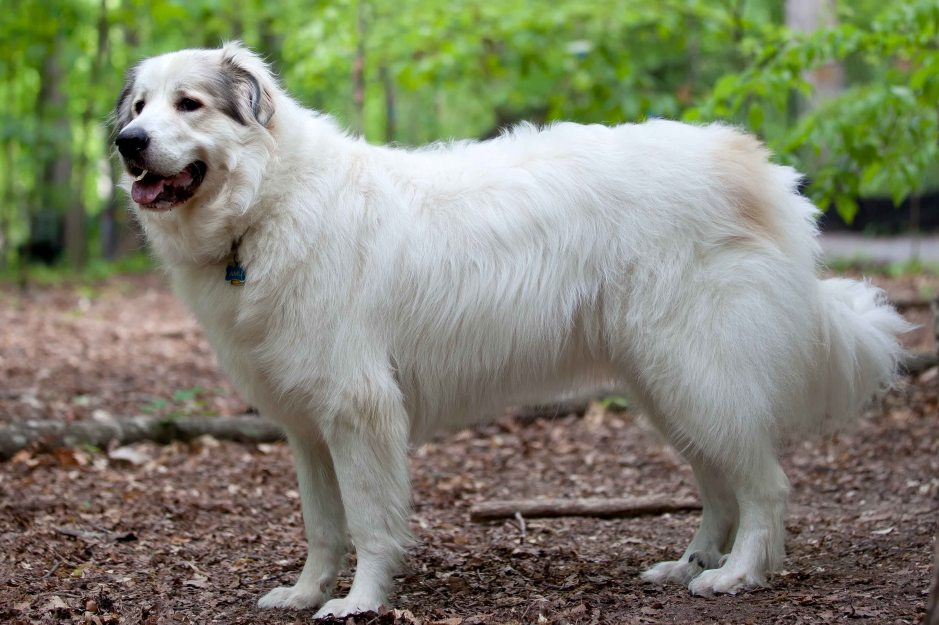Livestock Guardian Dogs are a very specialised type of animal that has been bred to protect a flock or herd from predators. These dogs’ possess a skill set that allow them to act independently and fend off any possible attack on one of the group. There are quite a few breeds of dog that make great Livestock Guardian Dogs and most of them are very old breeds since this was one of the first things next to hunting that dogs were bred to do.
Some great examples of breeds in this category include the Great Pyrenees, Kuvasz, Komondor, Tatra and Maremma. These Livestock Guarding Dogs do one thing well, protect their herd.
They do not control the organisation or movement of the herd, they simply make sure that no harm comes to them. In general these Livestock Guardian Dogs are larger than most breeds and this is important so that they have the power needed to deter any potential predator. Even if a confrontation doesn’t occur, the dog needs to look formidable, which makes any challenger think twice before testing the dog. This extra size and strength comes in handy as well if a fight does occur and usually helps the Livestock Guardian Dog prevail. In most cases these predators are smaller animals but in some areas they could be the size of a bear.
Using a dog that is large and heavy to protect the flock will usually fend off any attack as soon as the aggressor sees the dog approaching at speed.
They may wear sheep’s clothing
Most Livestock Guardian Dogs are also light in colour. This helps them blend in with the animals they are guarding and provides the element of surprise against a threat. By suddenly emerging from the flock or herd, barking loudly, they will often catch the predator off guard and send them running from the fight. In fact, surprise is one of the most powerful tools the Livestock Guardian Dog has when protecting a flock.
A large part of what makes this dog special is its ability to sense an attacker approaching and then spring from the shadows to fend them off. Their light colour also helps distinguish them from the attacker in case the herder is near and needs to take action. By clearly being able to separate friend from foe, there is less of chance of the guard dog being shot if the farmer needs to take drastic measures. The light coat will also pose less of a visual threat to the animals the dog is protecting. The herd is much more likely to accept the dog being near if it blends in.
They can by noisy
These Livestock Guardian Dogs are also a vocal breed and have a very loud and aggressive bark. They need this bark as a warning since most predators are intimidated by it and will flee rather than fight. In a lot of the breeds the bark is a bluff and the dog uses it to avoid a direct physical encounter. The old saying is very true for this breed, that their bark is much worse than their bite. This is something to keep in mind when considering one of these breeds as a pet. They will often bark at the slightest provocation and it is difficult to train this out of them.
They are independent Thinkers which affects their training
The breeds considered good Livestock Guardian Dogs are also a very intelligent group and need to think quickly when a predator approaches. In most cases an intruder will stalk the herd for some time before striking for a quick meal. These brave dogs need to be able to detect this interloper and take action before the attack occurs. They are constantly confronted with an ever-changing threat and have to be independent thinkers to adjust their protection quickly. Don’t expect the unequivocal obedience from a livestock guardian dog like you might see from say, a gun or herding dog. All of these qualities help to make these Livestock Guardian Dogs great pets for the home.
They will adopt their new family quickly and protect them the same way they guard their other charges.
Their stamina and intelligence makes them easy to train, fun loving and the perfect addition to any family.
The following is a list of Livestock Guardian Dogs
- Akbash Dog
- Anatolian Shepherd Dog
- Belgian Shepherd Dog (Also a herding dog – and thus much easier to train)
- Bergamasco Dog
- Bosnian Tornjak (Croatian Mountain Dog)
- Caucasian Ovcharka
- Central Asia Shepherd Dog
- Estrela Mountain Dog
- Kangal Dog
- Komondor
- Kuvasz Dog
- Maremma Sheepdog
- Pyrenean Mountain Dog – Great Pyrenees
- Polish Tatra Mountain Sheepdog
- Rafeiro do Alentejo
- Spanish Mastiff (Pyrenien Mastiff)
- Tibetan Mastiff – Do-Khyi
- Perro Majorero (Fuerteventura , Canary islands)
